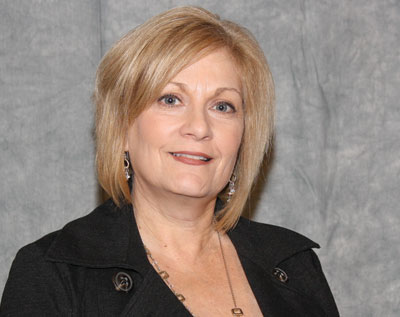 |
 |
 |
Technology Signing on the electronic dotted line Consumers may soon be expecting agents to offer electronic signature capabilities
By Nancy Doucette If it hasn't happened to you already, it won't be long before it does. It happened to me earlier this year when I was out for breakfast one weekend. It happened to Agents Council for Technology (ACT) Executive Director Jeff Yates when he bought a new house. What's happening? Growing use of electronic signatures. When it was time for me to pay for my breakfast, the server presented me with an iPad (the same one she used to take my order and communicate it to the kitchen). I "signed" the e-receipt authorizing the charge to my credit card using my finger (no hunting around for a pen). E-signatures aren't just a novelty that trendy breakfast places are using. In Yates' experience, it was a study in contrasts. His real estate agent in Montana, where his new home is located, used e-signature technology, which expedited the offer/counter offer process. "It made it so easy to do the transaction," Yates recalls. When he sold his house in Virginia, Yates says that real estate agent was still passing paper. "I must have had four versions of the sales contact that I had to print out (25 pages or so). I had to initial every page, and my wife and I had to sign it. Then we had to scan it back in and send it back to the agent. "Once consumers experience the ease of doing business with e-signatures in other industries, they're not going to be happy with the old approach. "Going paperless is one of the major efficiency-producing initiatives the insurance industry has embraced. Electronic signatures are the logical extension of that," Yates notes. "E-signatures reduce the amount of time it takes to get information back from customers. They reduce the need for follow-ups when customers don't initial all the places they should on a document." Both Forrester Research and Gartner say the e-signature market is showing explosive growth. Gartner reports that client inquiries around the topic of e-signature have doubled in the past two years. In its whitepaper titled "The Electronic Signature Market Is Poised to Take Off," Gartner notes that insurance, banking, and investment sectors lead the way in the use of e-signature technology. The report posits that the building momentum is based on increased availability of Software as a Service (SaaS) solutions.
Getting started The insurance industry's interest in e-signatures is underscored by Cal Durland, CPCU, director of industry relations at ACORD, and Marcia Berner, ACE, ACORD's chief membership officer. "Agents want a way to close the sale when the customer is in front on them," says Durland, who facilitates the ACORD-Users Group Information Exchange (AUGIE). AUGIE's participants (agents, carriers, and solution providers) work together in the AUGIE community to identify and resolve data exchange and workflow inefficiencies within the insurance industry. A number of AUGIE participants formed a separate Electronic Signature community with ACORD's help, because, while intrigued by the concept of e-signatures, many stated they weren't sure how to get started—they said they were unfamiliar with the legal requirements relating to e-signatures and were unsure how to choose a solution. "There were a number of issues that we felt could be dealt with by a group of very focused individuals, and while ACORD is squarely behind the AUGIE effort to promote the use of electronic signatures as a more efficient way of doing business, we're not lawyers—we build standards," Berner states. So last year, in response to requests from the Electronic Signature community participants, ACORD engaged international law firm Locke Lord, LLP, to develop a document that provides an easily understandable (from a layman's perspective) overview of the legal requirements and offers best practices for implementation. The document was also vetted by other legal minds whom ACORD works with on the regulatory side. The resulting strategic analysis titled "Guidelines for e-Signature and e-Delivery in the Insurance Business" speaks specifically to the insurance industry. It includes: • a summary of the legal requirements (as they pertain to the insurance industry) of the Electronic Signatures in Global and National Commerce Act (ESIGN) and the Uniform Electronic Transactions Act (UETA) • a list of recommended best practices for implementing electronic signatures in insurance • a glossary of common term definitions that pertain to electronic signatures In January 2013 the leaders of ACT and AUGIE held a joint planning session and agreed to work together to advance four important industry priorities in 2013. E-signatures was one of the four. ACORD and ACT both offer Locke Lord's "Guidelines" at their respective Web sites, with the ACT site providing an executive summary by Yates. A visit to the Knowledge Center at ACORD's Web site also connects visitors with two Webinars focusing on e-signatures which include agent insights into choosing an e-signature vendor; how e-signatures improve customer retention and satisfaction, especially with respect to mobile devices; and internal benefits.
Other considerations Yates says agents are telling ACT they want a consistent e-signature tool that they can make available to customers—one they, not the carrier, control. "Some carriers have an e-signature tool to get applications signed but it doesn't cover the other documents that an agent might need. So that's not a total solution," he explains. Both Berner and Yates say their respective organizations encourage carriers to give agents guidelines—"Here is what we expect when you use an e-signature tool"—not dictate which e-signature tool it should be. "The agent should be able to get a tool that will work with all the carriers and meets those criteria," Yates says. Additionally, Yates says increasing numbers of agents wish to deliver policies electronically to customers. He suggests that agents can use an e-signature solution to send an acknowledgement letter to the customer and attach the electronic policy to it which the customer can pull down in a secure way. "The agency has the acknowledgement letter for the file and also transmits the policy in a secure manner," he says.
ACORD's Durland says AUGIE has been sponsoring "road shows" around the country which include panels where agents share their experiences with e-signatures. She reports that some agents in the audience have remarked that implementing an e-signature solution is another cost for them to incur. Not so, say the panelists. Factoring in the cost of paper, postage, and time to handle transactions "the old fashioned way," an e-signature solution pays for itself fairly quickly. Berner says agents who may be undecided about e-signatures need to think about the consumers just entering the marketplace; they prefer doing business via the Internet. "Millennial consumers don't want to wait for a packet of paper to be delivered to them by mail," she says. With respect to the security of e-signatures, Berner says, "When you think about it, how secure is the present (wet-signing) process? There are e-signature solutions that have very sophisticated technology which tracks it from the first click, tracks who signed, when it was signed, 'locks' down the document and tracks whenever someone tries to re-access it for any reason and can resurrect that information upon request." Earlier this year ACORD surveyed its carrier members to see whether they allowed their agents to choose their own e-signature vendor and if not, why not. "The reason we got most often for not letting agents choose was that agents weren't asking for it," Berner notes. Yates predicts that's about to change. "We're starting to see significant movement by agents in their use of e-signatures. The issue has come of age in the last year and we're starting to see a lot more adoption of it." Author's note: Next month several agents will discuss how they've implemented e-signature technology and workflows to improve the customer experience. For more information: ACORD/AUGIE Agents Council for Technology |
|||||||||
| |||||||||
| ©The Rough Notes Company. No part of this publication may be reproduced, translated, stored in a database or retrieval system, or transmitted in any form by electronic, mechanical, photocopying, recording, or by other means, except as expressly permitted by the publisher. For permission contact Samuel W. Berman. |



